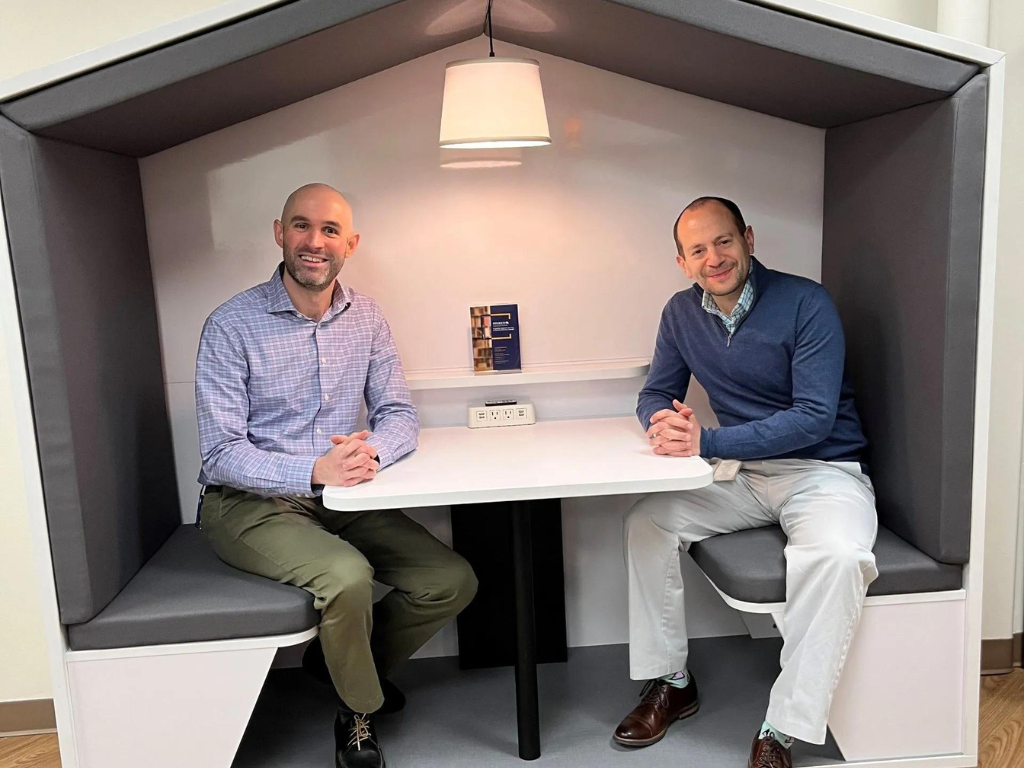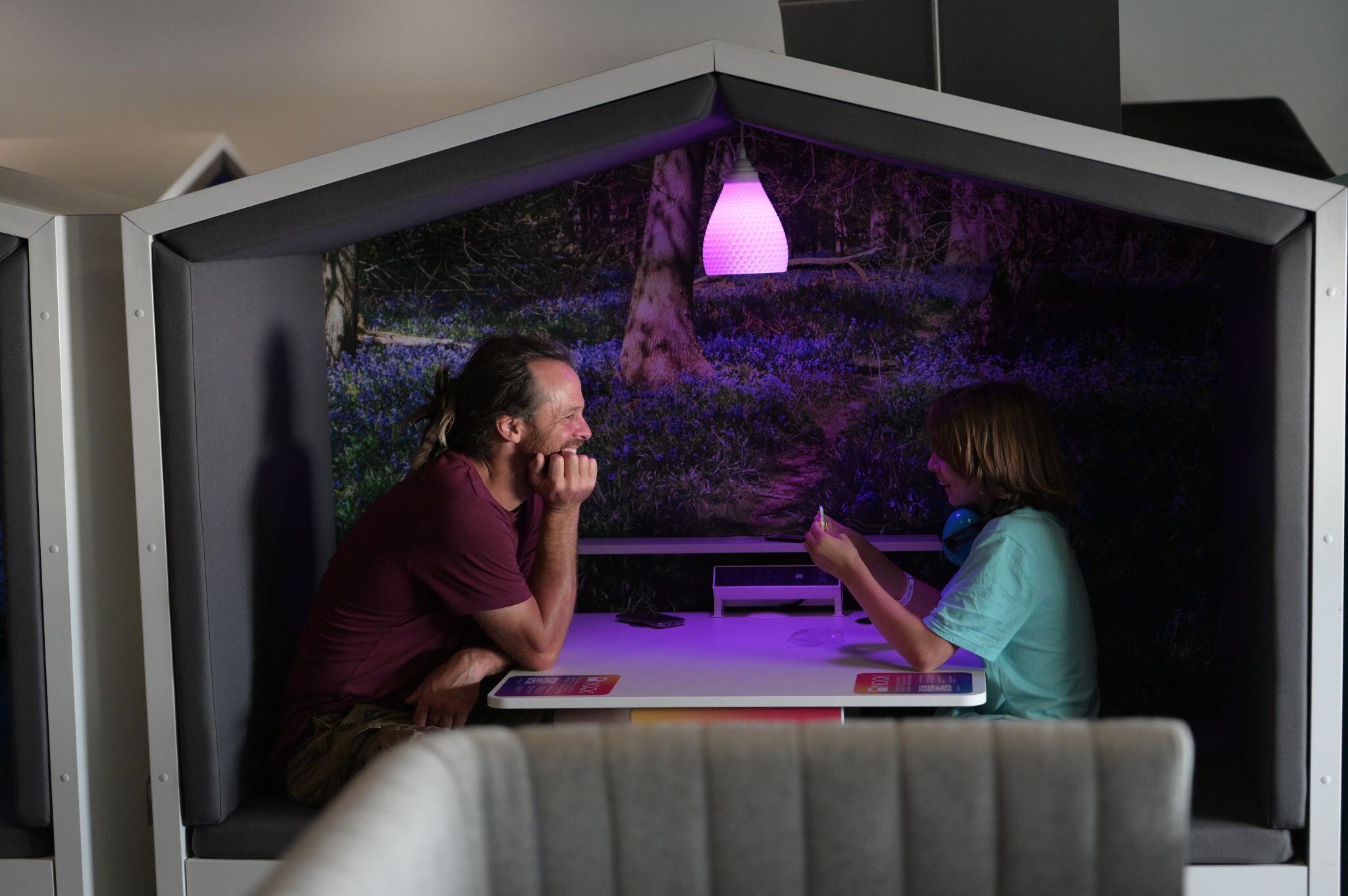One of the most widely recognised symbols of British tourism, the red telephone box is now almost redundant in its original use. Nowadays you’re more likely to find these iconic phone booths stuffed full of books, street food or housing community defibrillators.
Built in the 1920s, the telephone box was purely functional: a quiet, private location for people to use when having a conversation on the phone. Fast forward almost 100 years and there are now unlimited ways to communicate with one another; text, videocall, email, emojis (the modern-day hieroglyph), voice recordings, or using any of the hundreds of social media apps. How do you want to receive these messages, by phone, tablet, smartwatch, smart speaker, laptop or computer? The options are endless, but the quickest and often most convenient way to transfer information is through a voice conversation via the old-fashion phone call.

The world of work has changed, due to developments in technology, the acceptance of agile working and ease of connectivity – almost 80% of adults own a smartphone, according to the BBC, which means we can be reached almost instantly. Unfortunately, something was forgotten alongside the red telephone box, and that’s the functional need for a “quiet, private location”.

Particularly over the last few decades employers and facilities managers have been dealing with a tsunami of dissatisfaction statistics due to increased noise and office disturbance. In a 2015 report from The Leesman Review, it was discovered that a staggering 99% of people said that their concentration was impaired by office noise such as unanswered phones and background speech. Stacey Temprell, the Residential Sector Director from Saint-Gobain UK, further demonstrated how audio can affect health and wellbeing when she said that office noise “can be directly linked to levels of stress in the workplace, as well as a reduction in employee productivity. Other consequences of noise exposure have been identified, including cardiovascular disease, high blood pressure, headaches, hormonal changes, psychosomatic illnesses, sleep disorders, reduction in physical and mental performance, stress reactions, aggression, constant feelings of displeasure and reduction in general wellbeing”.

Introverts or those on the Autistic spectrum are particularly susceptible to noise, which is one of the reasons why the rise in open plan offices have been met with such animosity. With introverts making up 30-50% of the workforce, people who prefer quieter, private environments have been stripped of their safe space. This in turn has often meant that introverted people have had to adopt a louder persona, simply to blend in with their new surroundings. Susan Cain, author of Quiet: The Power of Introverts in a World That Can’t Stop Talking says, “When introverts act like extroverts, it’s very stressful. It’s not their natural behaviour. It takes a lot of effort and results in them having less mental and physical stamina available to do their work.”

In response to the auditory deluge, management began to explore acoustic solutions. Up popped phone booths, acoustic panels and sound pods. Whilst many have satisfied a quick fix, some of these ‘acoustic solutions’ have been designed with form over function. A recent example happened in a coworking space, when Nook’s CEO David O’Coimin went to make a private call in a phone booth; the assumption being that it was sound proof or at least conditioned to muffle out adjacent conversations. Far from being the case, David was able to sit inside his separate phone booth and hear with great clarity, every, single, word from the person next door.

It’s clear that people need an acoustic buffer. It’s also fairly obvious that workers need a focus space, a flexible area that encourages creativity and productivity in all its forms. And introverts? Well they need their privacy back, but actually, so do the extroverts. The point is that people – labels aside – should be provided places to have private conversations. And it needn’t be at the cost of feeling isolated from the rest of the team; meeting rooms can again be returned to occupiers needing meetings, as opposed to being used for confidential conversations.

This is where huddle spaces and collaboration pods can begin to bloom. By infusing functional work capabilities (desk + chair + technology) alongside holistic brain-soothers (quiet + comfort + privacy) you establish a welcoming, accessible and communal hot spot.
Neuroinclusive design is in the very veins of a Nook Pod. Acoustic comfort, privacy, enabled technology and instant flexibility are all incorporated to counterbalance what has been missing for the last few years. Better focus, greater engagement and quite simply some peace and quiet will lead to a noticeable improvement in personal wellbeing.




.png)
.png)
